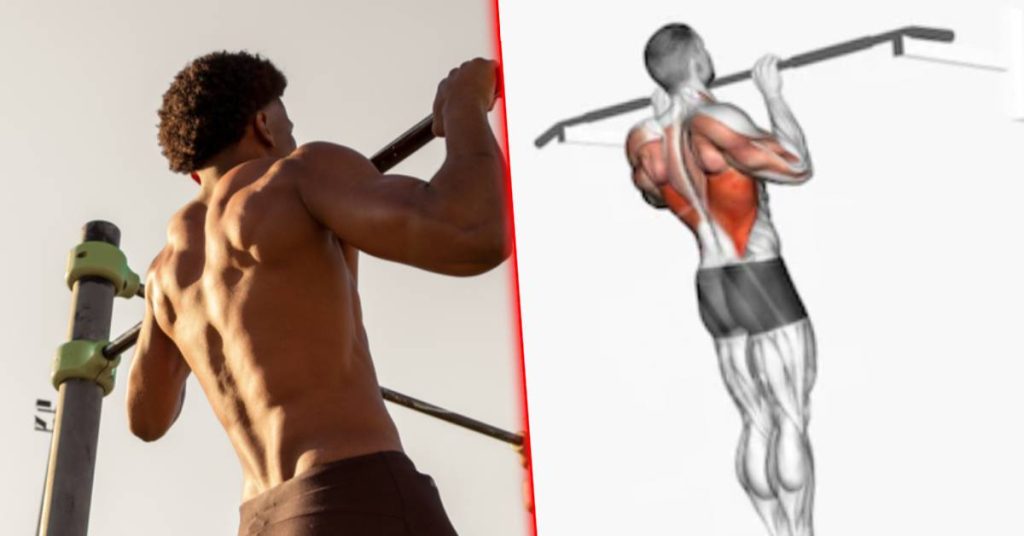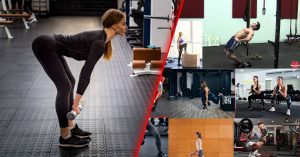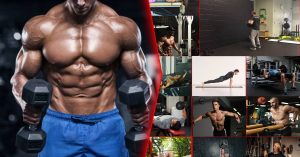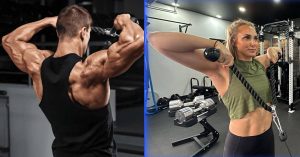Have you ever watched a superhero movie and marveled at the characters’ strength? It’s not all about pushing against villains; it’s their ability to pull themselves up from any challenge that truly showcases their power. The same applies to us in our fitness journeys. Upper body pull exercises are the key to unlocking a level of strength that seems almost superhuman.
But how exactly do these exercises transform you? Let’s dive into the details.
Table of contents
MORE keyboard_double_arrow_down LESS keyboard_double_arrow_up
The Importance of Upper Body Pull Exercises
In the vast universe of fitness, upper body pull exercises shine as the ultimate tools for sculpting a muscular and toned back, biceps, and shoulders. These exercises go beyond mere looks; they are the pillars of functional strength and injury prevention.
Imagine being able to carry groceries easily, dominate at arm wrestling, or even excel in sports like swimming or rock climbing. These aren’t just dreams; they’re achievable goals with the help of pull exercises.
The Ultimate Upper Body Pull Exercises
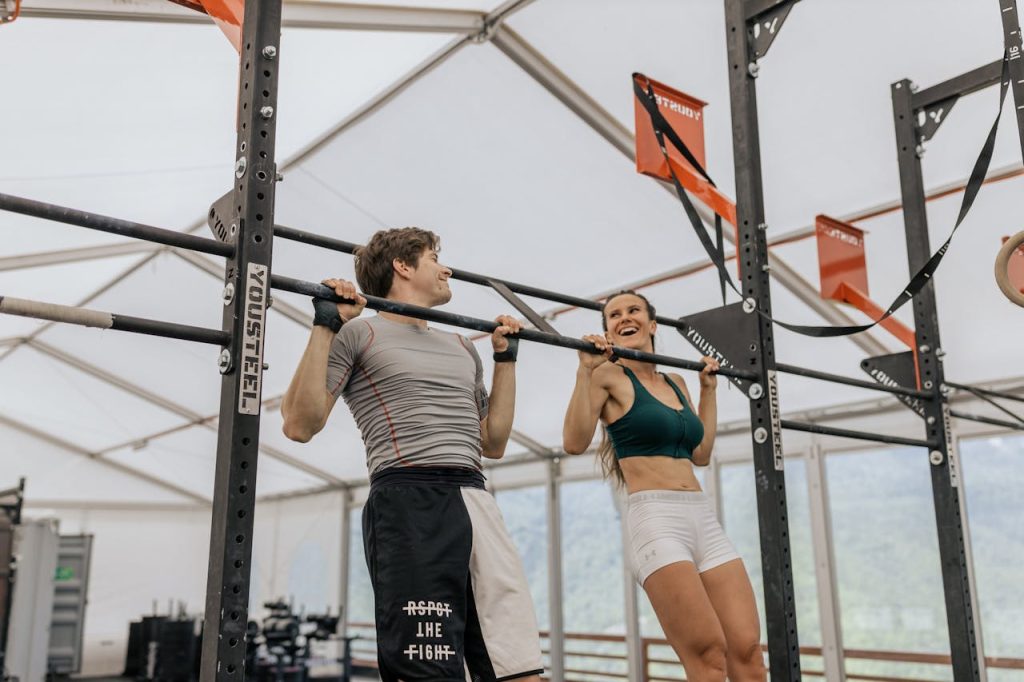
Now that you know the importance of upper body pull exercises, here are is a list you can try:
Bent-Over Row
Rowing is a great exercise for many muscles, not just your arms and back. In fact, rowing machines use muscles in almost your whole body. This exercise focuses on strengthening your back muscles, especially your lats, traps, and rhomboids.
Here’s how to do it with a barbell:
- Grab the bar with your hands facing you.
- Bend at your hips and knees, leaning forward until your back is almost flat.
- Keep your back straight and pull your elbows up towards the ceiling, lifting the bar to your belly.
- Squeeze your shoulder blades together at the top, then slowly lower the bar back down.
You can change this exercise in many ways:
- Use dumbbells instead of a barbell and do one arm at a time.
- Turn your hands over to work your biceps more.
- Lie on a bench to focus on your back muscles and avoid using leg strength.
Pull-Up
They’re tough, but great for building strong “lat” muscles. You’ll need a pull-up bar. Here’s how:
- Grab the bar with hands wider than your shoulders. Bend your knees if you need.
- Pull yourself up until your chin is above the bar. Imagine squeezing your shoulder blades together.
- Hold for a second, then slowly lower yourself back down.
Tips:
- Wider grip = harder exercise, but better for lats.
- Grip the bar with palms facing each other to use your biceps more.
- Use a resistance band for help if you’re a beginner.
- Lat pulldowns can also help you get stronger for pull-ups. We’ll cover those later.
Bicep Curls
Want impressive “arms popping out of shirts” muscles? Bicep curls are the way to go!
Here’s how to do them with dumbbells:
- Grab dumbbells, palms facing outwards. Hold them near your hips.
- Bend your elbows, raising the dumbbells towards your shoulders. Imagine turning your hands outwards slightly for extra muscle activation.
- Slowly lower the dumbbells back down
Hammer Curl
Your biceps actually have two muscles, and most exercises only train one of them. But the hammer curl, where you hold the weights with your palms facing each other, hits that other muscle too. This means you can build bigger, stronger biceps and fill out your sleeves like a superhero!
Lat Pulldown
Pull-ups and lat pulldowns both build back muscles, but in different ways:
- Pull-ups: Good for building strength, but harder to control the weight.
- Lat pulldowns: Easier to control weight and target specific muscles.
How to do a lat pulldown:
- Sit with your back straight.
- Grab the bar wider than your shoulders, palms facing away.
- Slowly pull the bar down to your chest, elbows out to your sides.
- Slowly raise the bar back up.
This exercise strengthens your “back wing” muscles (lats). Lat pulldowns are popular and effective, and you can even try different forms to target different areas of your back.
Rear Delt Fly
These target the back of your shoulders, but also other muscles depending on how you do them. Here’s the classic way with dumbbells:
- Bend at your hips, holding dumbbells palms facing each other near your knees.
- Imagine a bird flapping its wings – raise the weights out to the sides, squeezing your shoulder blades. Bend your elbows slightly.
- Hold at the top for a second, then slowly lower the weights back down.
Tips:
- Do this exercise leaning on a bench to focus on your shoulders even more.
- Use a cable machine or fly machine to target different back muscles too.
- Remember, this is just a paraphrase and not a substitute for professional fitness advice. Always prioritize proper form and listen to your body.
Renegade Row
This exercise does less weight than other rows, but it also challenges your core stability. Here’s how to do it:
- Start in a high plank with dumbbells under your shoulders.
- Raise one dumbbell to your side, elbow going towards the ceiling. Keep your hips facing the floor, even if you need to widen your feet slightly.
- Lower the weight back down and switch sides.
This mainly works your back and shoulders, but you can make it full-body:
- Do a push-up before raising the weight for extra chest and tricep work.
- Add a quick jump after lowering the weight for a burst of cardio.
What Do Experts Say About Upper Body Pull Exercises?
Upper body pull exercises are non-negotiable for anyone aiming to cultivate a physique that’s not only visually impressive but also functionally robust. These exercises are celebrated for their unparalleled ability to enhance athletic performance and shield the body from injuries.
According to Dr. Michael Esco, an associate professor of exercise science at Auburn University, “Pulling movements are important for overall upper body health and function.” He goes on to say that “neglecting these movements can lead to muscle imbalances, poor posture, and increased risk of injury.”
Furthermore, Dr. Stuart McGill, a professor of spine biomechanics at the University of Waterloo, also emphasizes the importance of incorporating pulling movements into a workout routine. He states that “pulling exercises help to balance out pushing exercises, which are often overemphasized in many training programs.”
Also, the following Instagram post by Julia Perfetto perfectly emphasizes the importance of upper body pull exercises:
Additional Tips and Advice for When You Do Upper Body Pull Exercises
Embarking on the path to upper body prowess begins with mastering the fundamentals. The sage advice from fitness experts boils down to a few key principles:
- Start Light, Aim Right: Perfecting form with lighter weights lays the foundation for future gains. It’s the quality of movement, not the quantity of weight, that ignites muscle growth.
- Progressive Overload: Gradually increasing the weight as your body adapts is crucial for continuous improvement. It’s a delicate dance of pushing your limits without courting injury.
- Consistency Is Crucial: Integrating these exercises into your routine at least twice a week is vital for tangible results. Like any great endeavor, the path to greatness is paved with regular, dedicated effort.
- Listen to Your Body: The importance of rest and recovery cannot be overstated. Muscles grow not just during the exertion of lifting but in the periods of rest that follow.
- Don’t ignore leg pull exercises: The notion that leg exercises are irrelevant to an upper body-focused routine is a myth. In reality, leg strength plays a pivotal role in stabilizing and powering through upper body workouts. It’s about holistic development integrating leg work ensures a balanced, fully functional body that excels in both aesthetics and performance.
Conclusion
By incorporating upper body pull exercises into your routine, you’re not just sculpting a muscular physique, you’re unlocking a level of functional strength and injury prevention that empowers you in everyday life and elevates your athletic performance.
Remember, start light and focus on form, gradually increase weight, and maintain consistency for sustained progress in pull exercises upper body. Listen to your body, integrate leg exercises for balance, and witness the superhero within come alive.
Key Points
- Pull exercises are crucial for developing a muscular and toned back, biceps, and shoulders, contributing to both aesthetics and functional strength.
- Incorporating a variety of pull exercises, such as the bent-over row, pull-ups, bicep curls, hammer curls, lat pulldowns, rear delt flies, and renegade rows, ensures comprehensive upper body development.
- Emphasizing proper technique and progressively increasing intensity are key strategies for maximizing the effectiveness of pull exercises and preventing injuries.
- A balanced workout regimen that includes both push and pull exercises ensures even development of upper body muscles, enhancing overall strength and functionality.
- Incorporating leg exercises into your routine is essential for a balanced physique and improved performance in upper body pull exercises, underscoring the interconnectedness of body muscle groups.
- Maintaining consistency in your workout routine and prioritizing rest and recovery are crucial for achieving noticeable results and sustaining long-term fitness progress.
- Different pull-up variations, including the hammer pull-up, offer options to accommodate individual preferences and physical considerations, allowing for customization of workouts to maximize muscle growth and strength.
- Upper body pull exercises are not just about muscle building; they are integral to unlocking the body’s full potential, improving everyday functional strength, and achieving a balanced and strong physique ready for various challenges.
FAQs
What are some exercises to help with pull-ups?
To improve your pull-up performance, consider incorporating these exercises into your training routine:
- Hanging Hollow Hold: Begin by hanging from a bar with an overhead grip. This exercise strengthens your core and improves your stability during pull-ups.
- Hanging Scapular Depression Hold: Hang from the bar using an overhand grip and focus on lowering your body by depressing your shoulder blades. This strengthens the muscles used at the start of a pull-up.
- Resistance Band Bent-Over Row: Utilize a resistance band to perform bent-over rows, mimicking the pull-up motion and strengthening your back and biceps.
- Inverted Row: This exercise targets your back and biceps, similar to pull-ups, but is performed at a different angle to help build strength in those muscles.
Are arms considered push or pull?
In the context of push-pull workouts, arms are trained in both push and pull workouts. Push workouts typically target the chest, shoulders, and triceps, while pull workouts focus on the back, biceps, and forearms. This approach ensures a balanced training of the arms by engaging them in both pushing and pulling motions.
Which body parts are trained in pull exercises?
Pull exercises primarily target the upper body pulling muscles, which include the back and biceps. When designing a “pull” workout, you aim to engage these muscle groups effectively. Additionally, leg workouts focus on the lower body, including the quads, hamstrings, calves, and abdominals, ensuring a comprehensive training routine.
Which pull-up variation is considered the best?
The best pull-up variation for muscle growth, especially if you’re looking to move a significant amount of weight, is the hammer pull-up. This variation employs a neutral grip, which many find more comfortable, especially if experiencing wrist or shoulder discomfort.
The shoulder-width grip used in hammer pull-ups makes it an effective choice for those looking to maximize their pull-up efficiency without strain.
Is the Arnold Press a push or pull exercise?
The Arnold Press is classified as a push exercise. It targets the shoulders by working the front, side, and rear deltoid heads, and also engages the triceps due to the overhead pushing motion. This exercise is named after Arnold Schwarzenegger and is renowned for its effectiveness in building shoulder strength and size.

ABOUT THE AUTHOR
Follow Valen Steven for a dose of fitness enthusiasm, evidence-based advice, and a roadmap to achieving your health and wellness goals.
Subscribe to our Newsletter
Dive into a world of fitness and wellness with our exclusive newsletter! Sign up now and receive weekly power-packs of fitness wisdom

